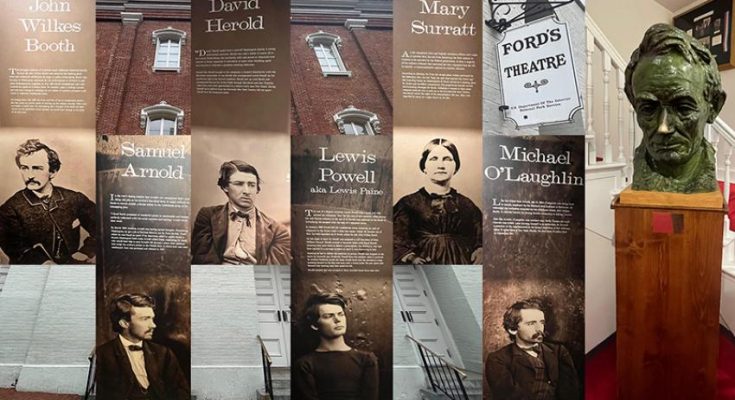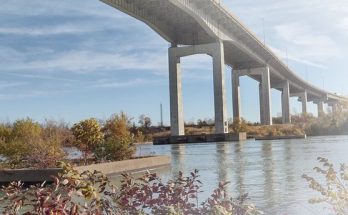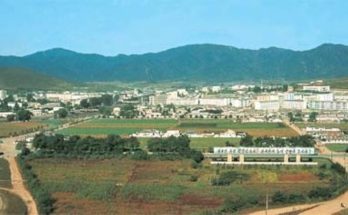#FordsTheatre, #AbrahamLincoln, #WashingtonDC, #JohnWilkesBooth
IBNS-CMEDIA: Abraham Lincoln was assassinated on April 15, 1865 (he succumbed to the bullet wound of the previous night on April 14) at the Ford’s Theatre in Washington DC by stage actor John Wilkes Booth. Sujoy Dhar visits the Ford’s Theatre museum ahead of yet another death anniversary of the US president whose resolve to end slavery cost him his life.
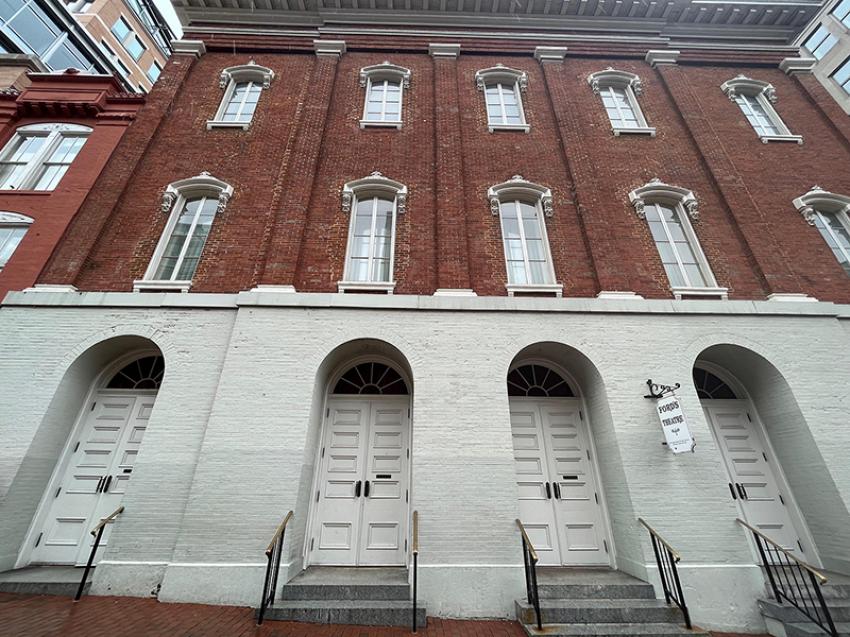 Ford’s Theatre. Photo credit: NITN/Sujoy Dhar
Ford’s Theatre. Photo credit: NITN/Sujoy Dhar
April 14, 1865 was Good Friday. Stage actor John Wilkes Booth, one of the handsomest Shakespearean actors of his time in America who hailed from the famous Booth theatrical family from Maryland, learned President Abraham Lincoln with his wife Mary would attend a performance of the comedy Our American Cousin that night at Ford’s Theatre in Washington DC.
It is here that Booth, who was a Confederate sympathizer and hated Lincoln for abolition of slavery, would often perform and it is here that one of the greatest American presidents would often come to see the performances.
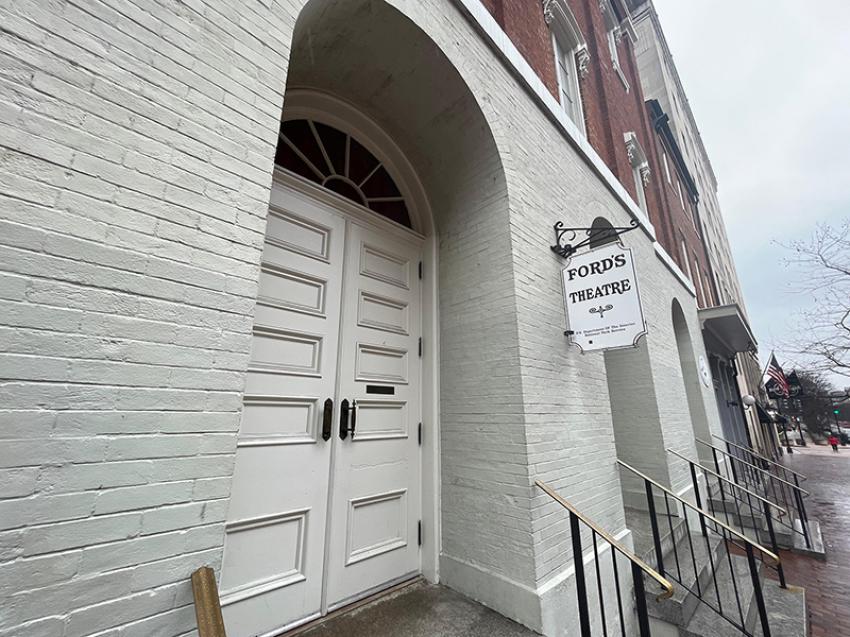 Ford’s Theatre from outside. Photo credit: NITN/Sujoy Dhar
Ford’s Theatre from outside. Photo credit: NITN/Sujoy Dhar
“Somewhere near 10 o’clock, during the second scene of the third act of Our American Cousin I saw Booth pass along near the President’s box, and then stop and lean against the wall,” said James P. Ferguson, audience member and a restaurant owner, about the fateful night and the moment.
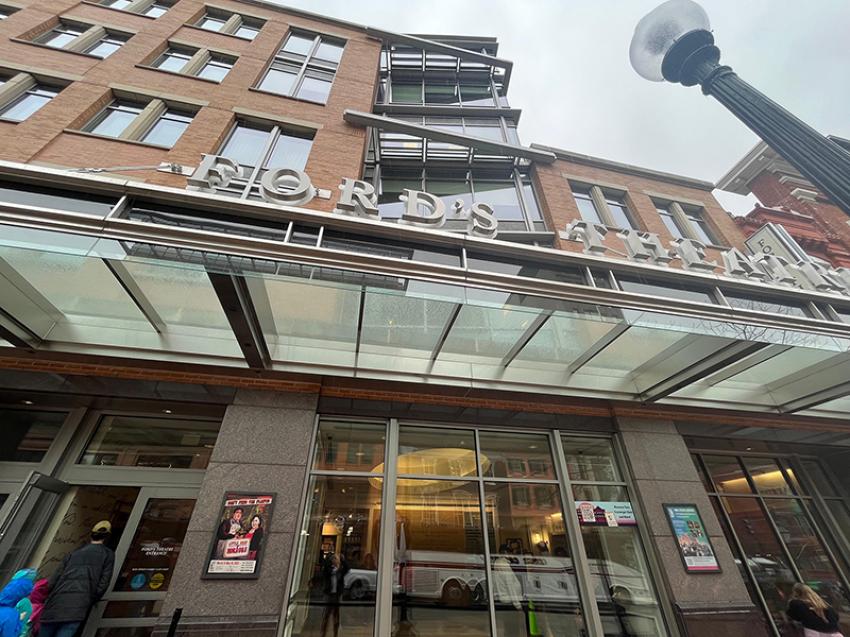 Ford’s Theatre now. Photo credit: NITN/Sujoy Dhar
Ford’s Theatre now. Photo credit: NITN/Sujoy Dhar
He said Booth then pushed open the first door that leads to the box where Lincoln was seated with his wife.
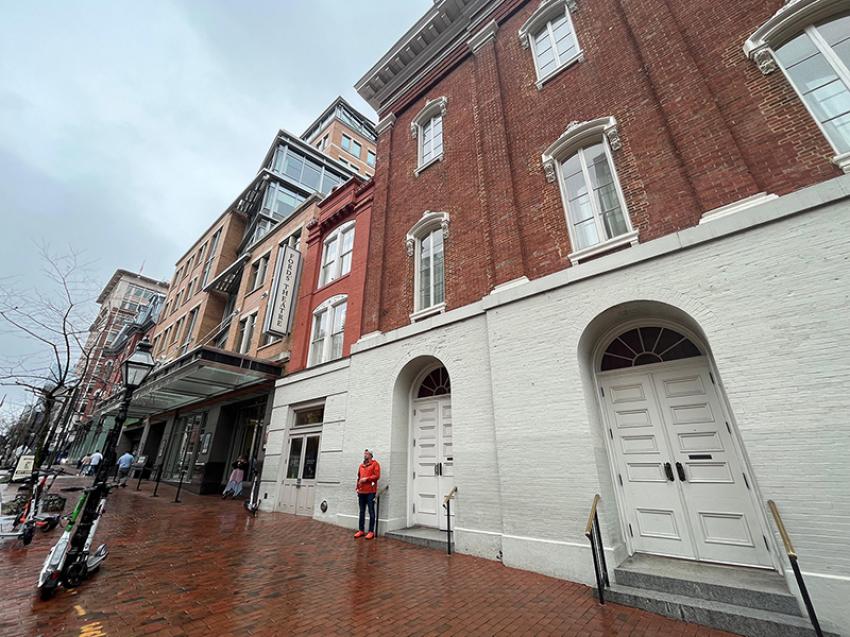 Ford’s Theatre on a rain washed day in March 2024. Photo credit: NITN/Sujoy Dhar
Ford’s Theatre on a rain washed day in March 2024. Photo credit: NITN/Sujoy Dhar
As the audience laughed out loud on the funny lines of the comedy, Booth took the advantage of their engagement to advance inside the box.
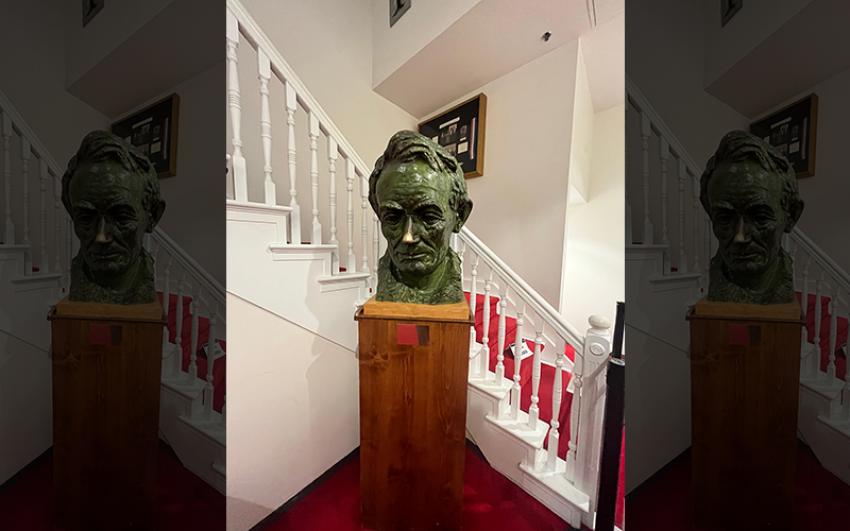 A bust of Lincoln beside a staircase in Ford’s Theatre. Photo credit: NITN/Sujoy Dhar
A bust of Lincoln beside a staircase in Ford’s Theatre. Photo credit: NITN/Sujoy Dhar
Later Ford’s Theater actress Jeannie Gourlay recalled: “My lines were very interesting and a dramatic point of the play, so the attention of the whole audience was centred upon the stage.”
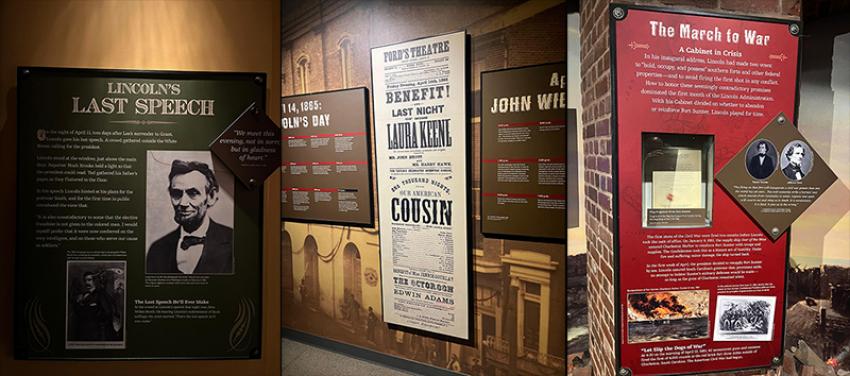 An exhibit at Ford’s Theatre museum. Photo credit: NITN/Sujoy Dhar
An exhibit at Ford’s Theatre museum. Photo credit: NITN/Sujoy Dhar
As the audience burst into roars of laughter over the comic lines, Booth stepped into the box and fired his first shot at the back of the head of Lincoln with a .44 calibre Derringer.
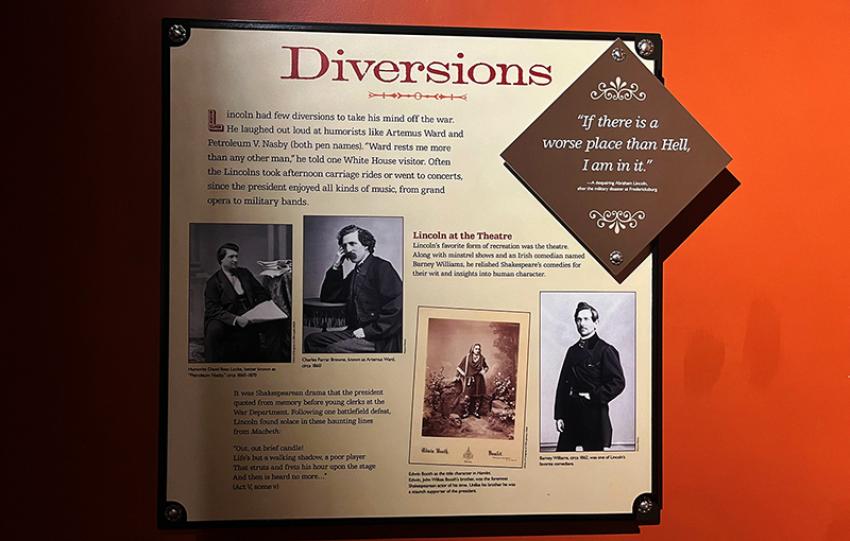 An exhibit in the theatre museum. Photo credit: NITN/Sujoy Dhar
An exhibit in the theatre museum. Photo credit: NITN/Sujoy Dhar
After firing at Lincoln, Booth leapt from the balcony but the spur of his left boot got caught on a flag draped over the rail. One of Lincoln’s guests Major Henry Rathborne had tried to stop Booth from escaping but as they grappled, he slashed his hand with a dagger.
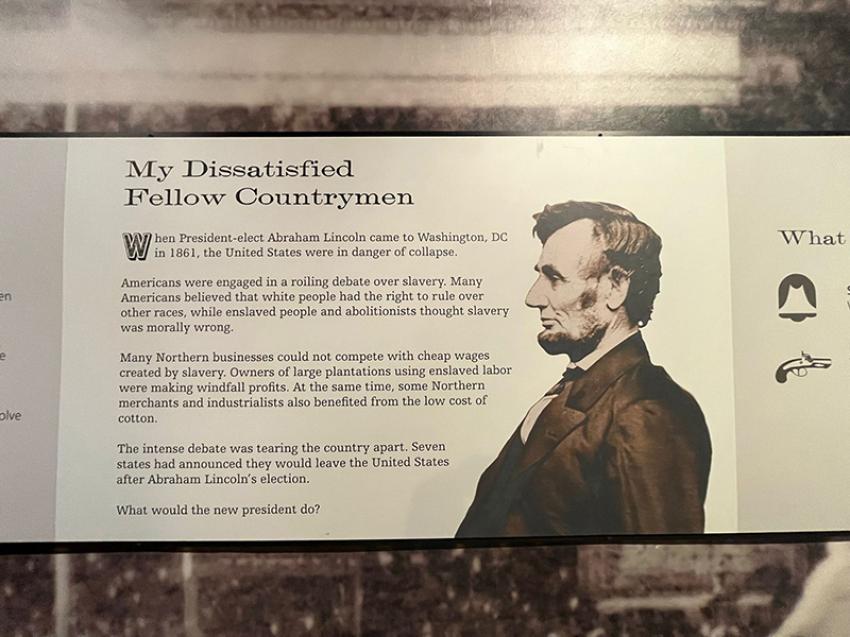 An exhibit on Lincoln’s tough time as President. Photo credit: NITN/Sujoy Dhar
An exhibit on Lincoln’s tough time as President. Photo credit: NITN/Sujoy Dhar
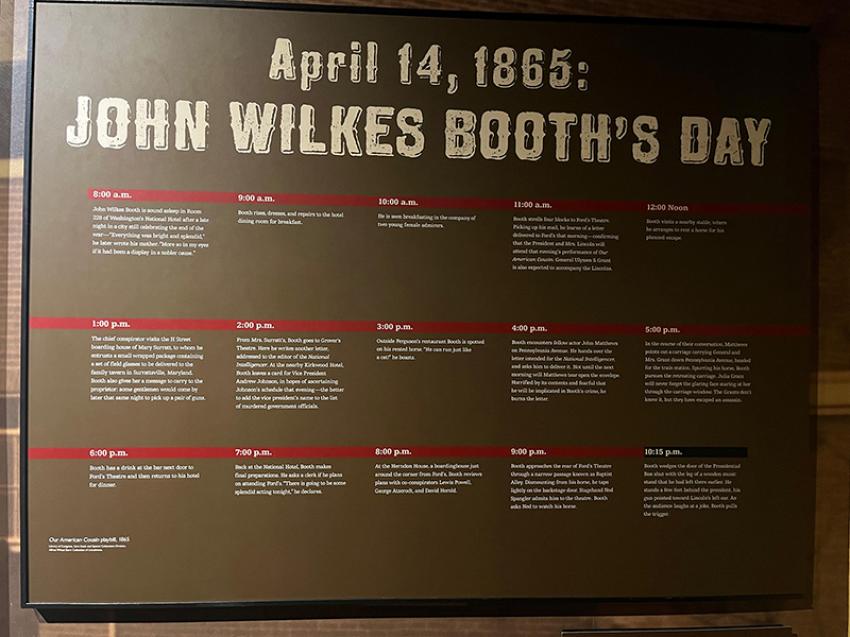 An exhibit on the timeline of the day of Booth ahead of carrying out the assassination. Photo credit: NITN/Sujoy Dhar
An exhibit on the timeline of the day of Booth ahead of carrying out the assassination. Photo credit: NITN/Sujoy Dhar
Booth shouted, “Sic semper tyrannis!” (the motto of the state of Virginia, meaning “Thus always to tyrants!”) or “The South is avenged!” or both.
Booth was injured and broke a bone of his leg from the leap but he rushed out of the back door and escaped on horseback in the darkness.
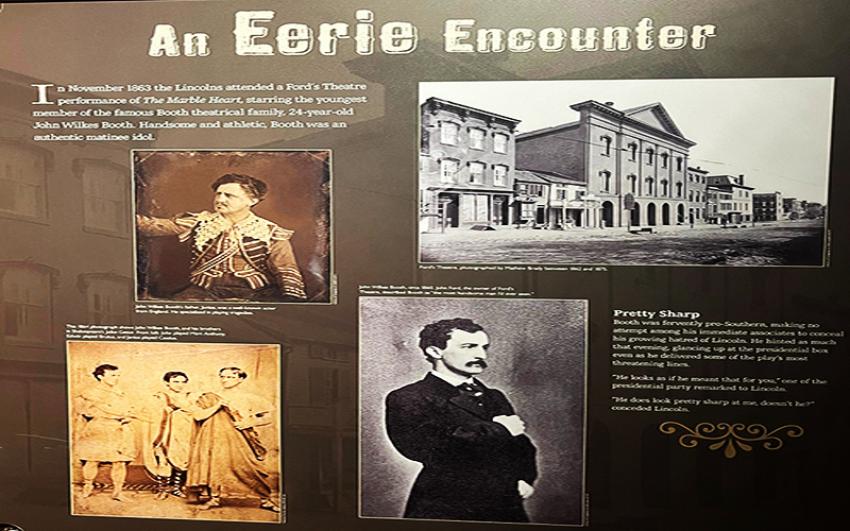 An exhibit in Ford’s Theatre museum featuring Booth’s stage performances. He later went on to assassinate Lincoln. Photo credit: NITN/Sujoy Dhar
An exhibit in Ford’s Theatre museum featuring Booth’s stage performances. He later went on to assassinate Lincoln. Photo credit: NITN/Sujoy Dhar
According to the Library of Congress account, Dr. Charles Leale, a doctor who was among the audience that day, rushed upstairs to the box where Lincoln was. He found the bullet lodged behind the right eye of Lincoln after it entered through the president’s left ear. He was paralyzed and barely breathing, the account said. Lincoln died the next day.
During my recent visit to Washington DC. I wanted to discover more about Lincoln and his assassination. So this time Ford’s Theatre was uppermost on my list of attractions to visit in the US capital.
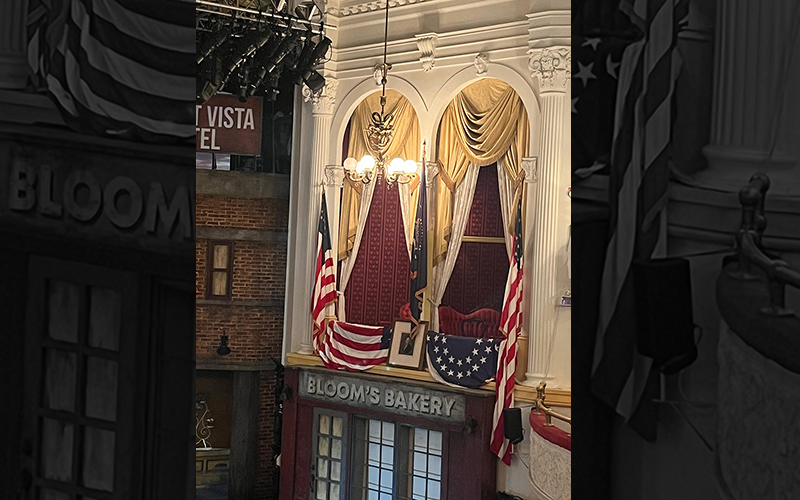 The Presidential box where Lincoln was fatally shot at by Booth. Photo credit: NITN/Sujoy Dhar
The Presidential box where Lincoln was fatally shot at by Booth. Photo credit: NITN/Sujoy Dhar
Ford’s Theatre at 511 10th St, N.W. in Washington DC explores the legacy of President Abraham Lincoln and celebrates the American experience through theatre and education.
America was shocked by Lincoln’s assassination and Ford’s Theatre remained closed for more than 100 years.
According to the theatre website, during the American Civil War, Ford’s Theatre was one of Washington’s top entertainment venues to escape from the realities of war. President Lincoln, who loved theatre, opera and Shakespeare, would visit Ford’s Theatre on at least 10 formal occasions.
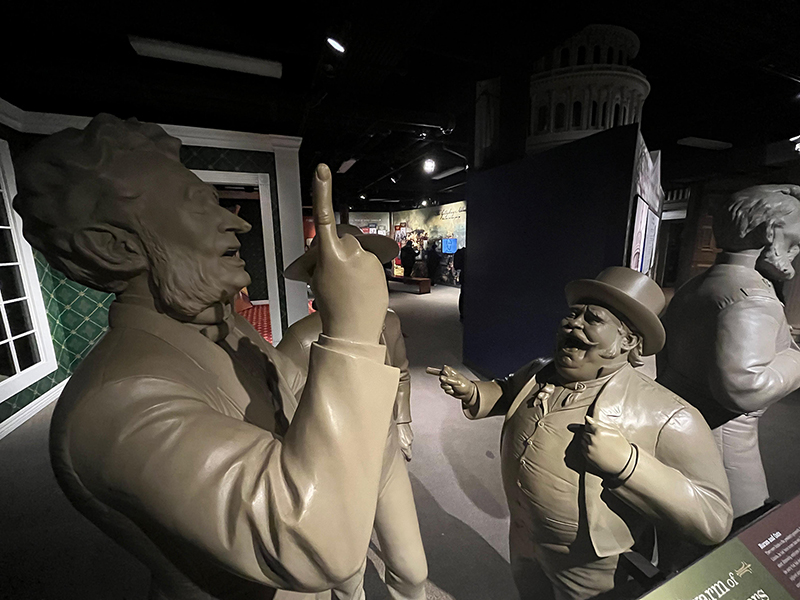 Lincoln’s statue in Ford’s Theatre. Photo credit: NITN/Sujoy Dhar
Lincoln’s statue in Ford’s Theatre. Photo credit: NITN/Sujoy Dhar
But the visit on April 14, 1865 changed the course of American history. John Wilkes Booth, the Confederate sympathizer and a man with emotional instability despite his theatrical talents, knew the President was among the audience and he planned well enough to sneak into the President’s Box and kill him with a single-shot Derringer pistol.
Lincoln died the next morning (at 7.22 am 15th April, 1865) in the Petersen House, a boarding house located just across the street from the theatre.
Open everyday, the museum at Ford’s Theatre is a must visit for anyone who wants to know more about Lincoln, his presidency, his assassination and the Civil War.
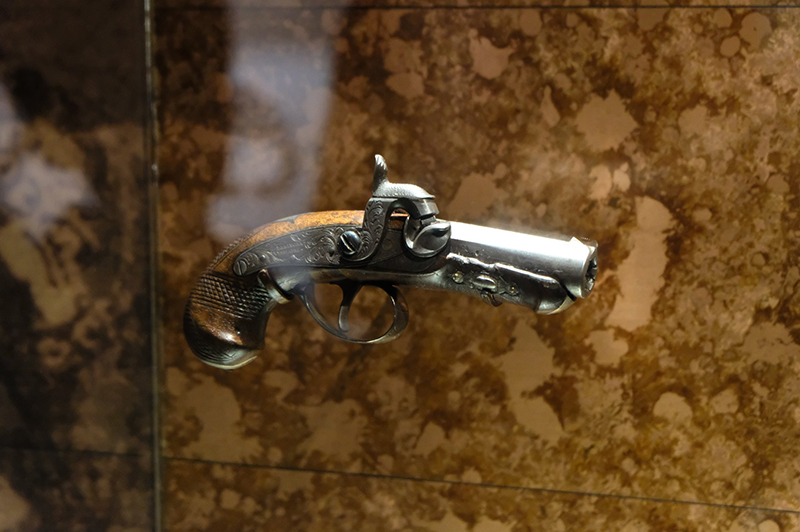 The pistol with which Lincoln was killed. Photo credit: Ford’s Theatre FB page.
The pistol with which Lincoln was killed. Photo credit: Ford’s Theatre FB page.
The museum’s exhibits capture the life of Abraham Lincoln from the beginning of his assumption of power to the dramatic assassination in the theatre. It has nuggets of information on his life in White House and the challenges he faced during the American Civil War (April 12, 1861 – May 26, 1865) between the Union (“the North”) and the Confederacy (“the South”), which had been formed by states that had seceded from the Union.
The crux of the conflict was over expansion of slavery in the western territories, a move Lincoln had opposed, earning him the wrath of the Confederates who on the other hand supported the institution of slavery.
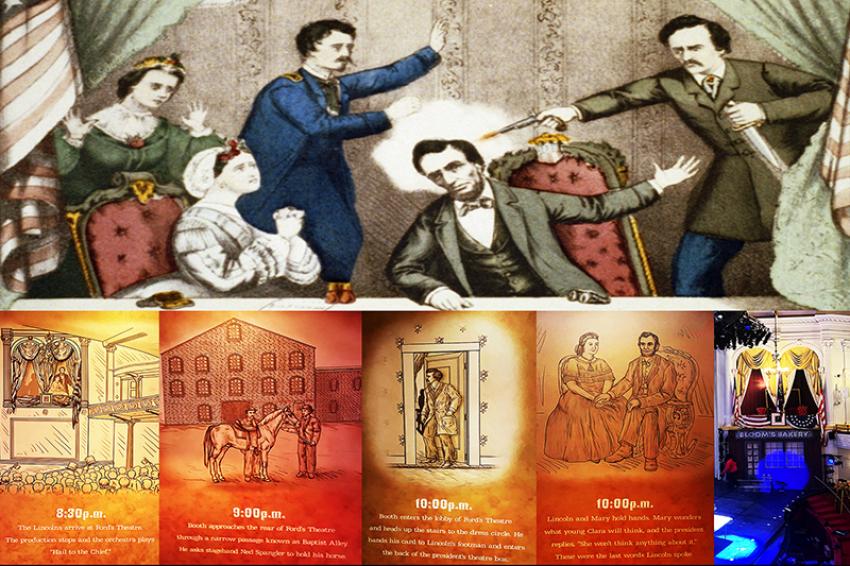 Illustrations of the last few hours before Lincoln was shot at Ford’s Theatre by Booth. Photo credit: NITN/Sujoy Dhar
Illustrations of the last few hours before Lincoln was shot at Ford’s Theatre by Booth. Photo credit: NITN/Sujoy Dhar
The museum is as much about the civil war and Lincoln as his assassin- actor John Wilkes Booth and the other conspirators. Booth was tracked down 12 days later after a manhunt at a Northern Virginia farm. After the barn where he was hiding was set on fire, he was fatally shot in the neck by Union soldier Boston Corbett following a standoff. He died a few hours later.
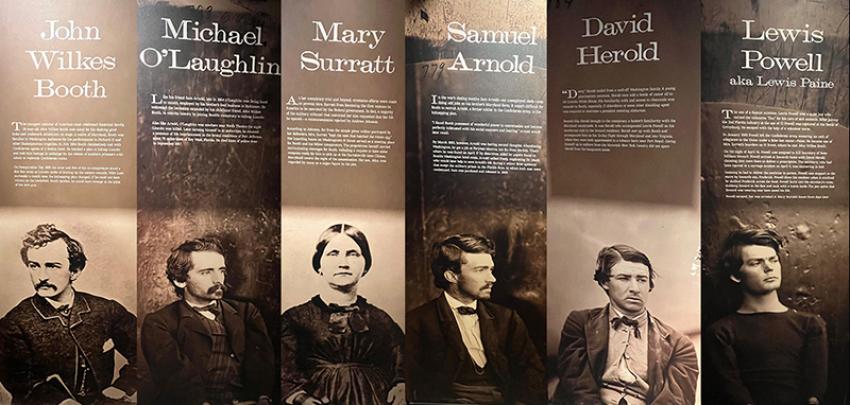 The assassin and other conspirators. Photo credit: NITN/Sujoy Dhar
The assassin and other conspirators. Photo credit: NITN/Sujoy Dhar
Among the eight conspirators who were later convicted, four were soon hanged. Mary Surratt, mother of Booth, was also convicted as one of the conspirators and hanged.
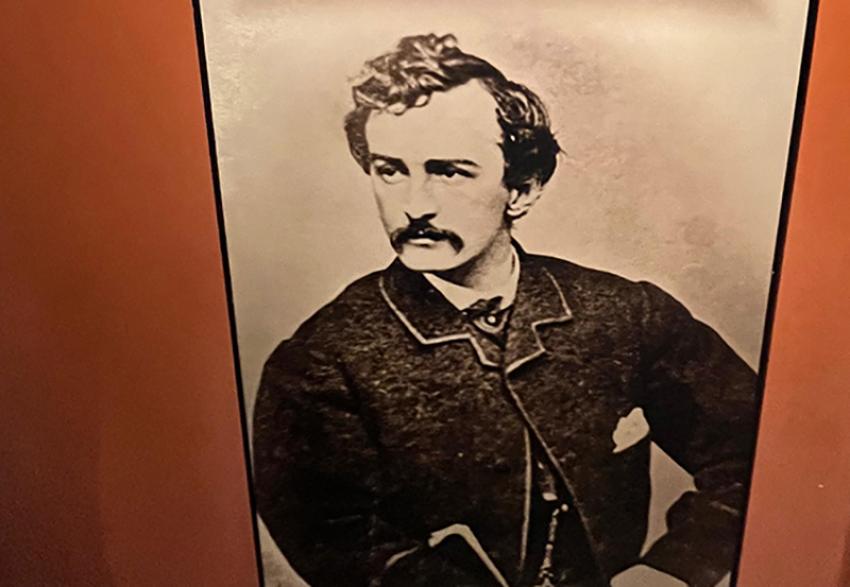 An image of assassin John Wilkes Booth in the Ford’s Theatre museum. Photo credit: NITN/Sujoy Dhar
An image of assassin John Wilkes Booth in the Ford’s Theatre museum. Photo credit: NITN/Sujoy Dhar
The museum exhibits artifacts related to the assassination, including the weapons Booth used and the high-resolution images of the clothing President Abraham Lincoln wore to Ford’s Theatre that night.
The tour ends with a walkthrough of the theatre where in the Presidential Box Lincoln was shot. The theatre, which was closed for almost a hundred years since the assassination, looks very much the way it did the night Booth fired at Lincoln.
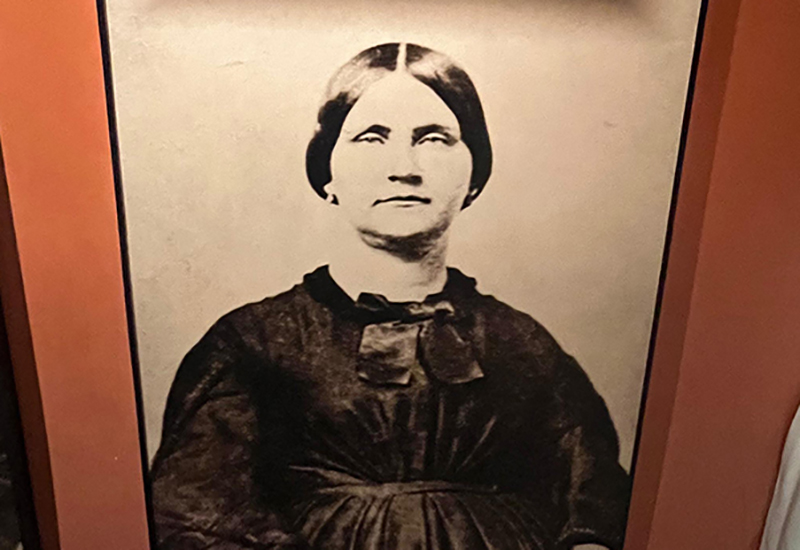 An exhibit featuring assassin Booth’s mother Mary Surratt, who was later hanged after her conviction in the conspiracy. Photo credit: NITN/Sujoy Dhar
An exhibit featuring assassin Booth’s mother Mary Surratt, who was later hanged after her conviction in the conspiracy. Photo credit: NITN/Sujoy Dhar
The President’s Box is decorated with an American flag and a portrait of President George Washington, just as it was in 1865. The interior of the President’s Box is closed to the public to protect it from damage.
Ford’s Theatre visit is indispensable if you want to explore the life and time of President Lincoln, his shocking assassination at the theatre during a show and the events leading up to it in the backdrop of the American Civil War. Maps, photographs and illustrations make it a compelling experience.
Images by Sujoy Dhar / Ford’s Theatre

